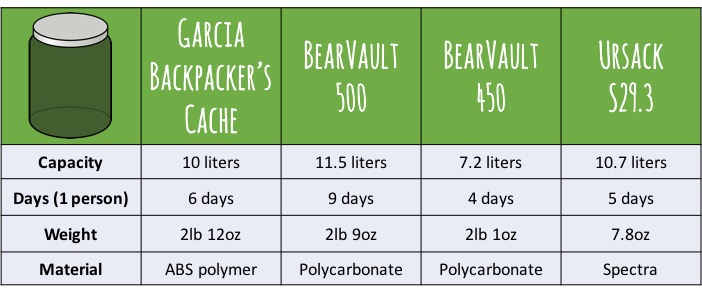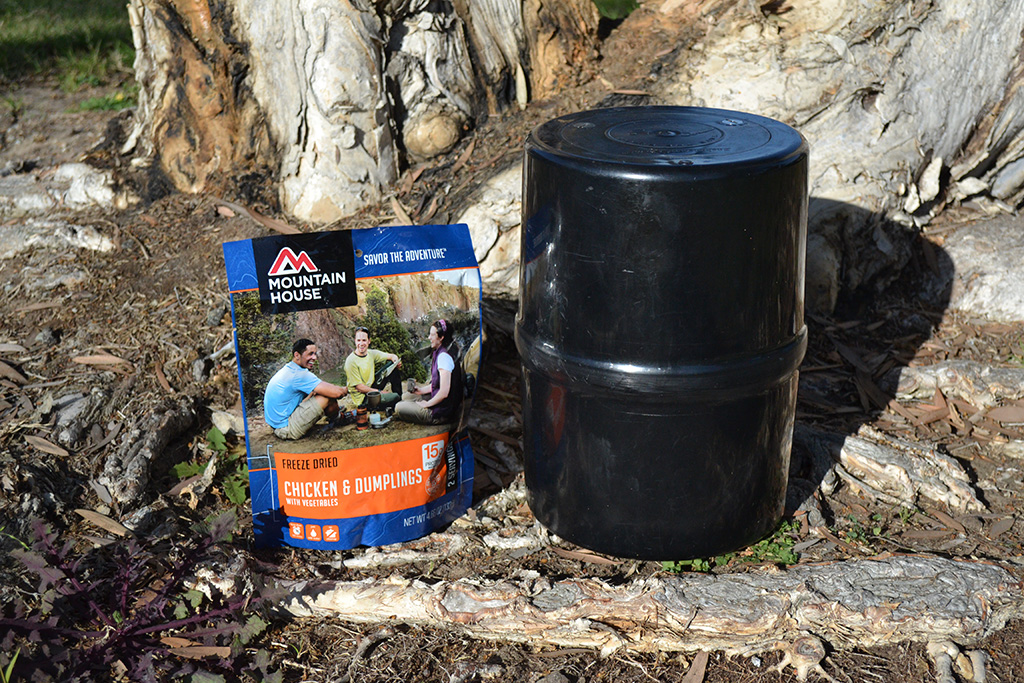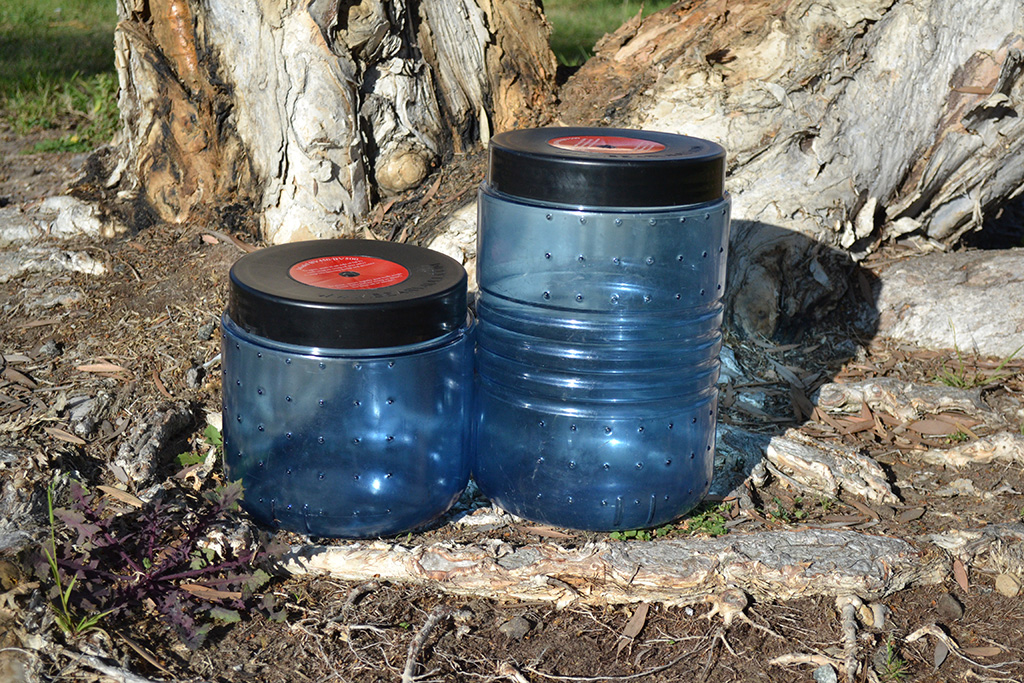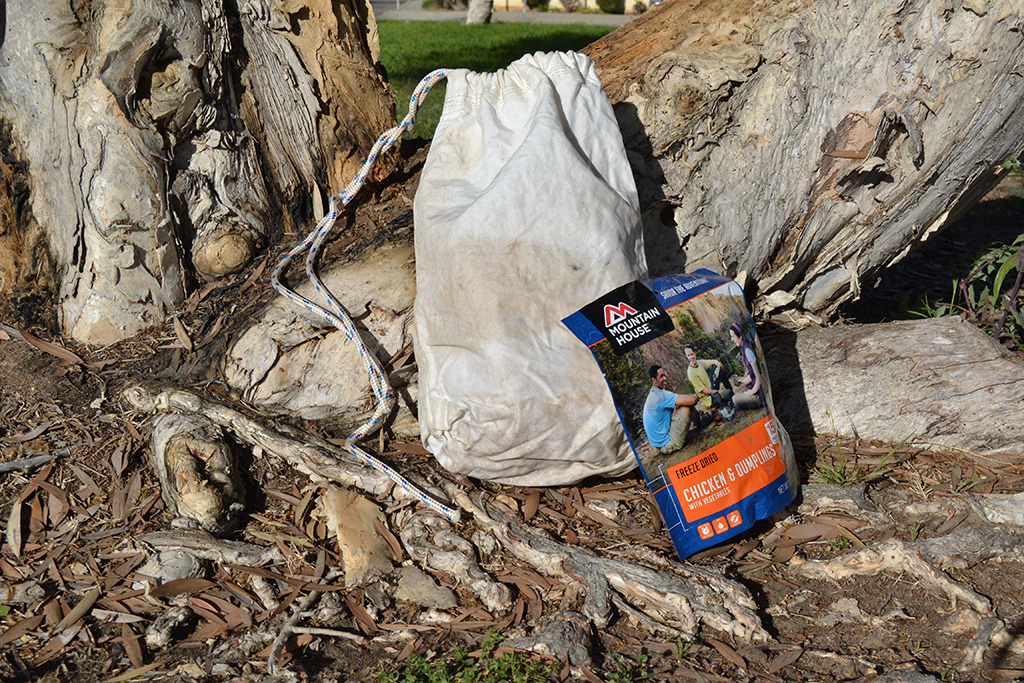Bear Canister Review
Jump to: My Pick / Shop / Tips for Use / Links / Comments

Updated February 2018
The dreaded bear canister… I don’t know about you, but this is the number one most hated piece of gear in my hiking group. Unfortunately it's also a very firm requirement for most of our trips in the Sierras. It was viewed as either an underpacked waste of space or an impossibly small puzzle, particularly when staring at a 10-day resupply wondering where all that food would go. But it only takes one incident to really make you appreciate your bear canister. Ours was day one on the John Muir Trail when an attention-seeking bear named Purple 6 raided our camp 3 times in one night.
>> Click here for my JMT Day 1 Summary and our Purple 6 encounterOver the years I’ve rented, borrowed, and owned my fair share of bear container options. This article includes a comparison of these options, my honest opinions, and some tips for using your own bear container. If you’re interested in purchasing one, you can follow the Amazon links below.
Here’s a quick table summarizing the options I’ve tried. Note that the number of days is the maximum that I have been able to fit for myself (a relatively small woman!) and may not accurately reflect your number of days. The Ursack weight does not include the scent proof bag or metallic sheet.


- garcia backpacker's cache -

When I first started backpacking I found myself renting Garcia canisters from REI so often that it finally made sense to purchase one. At the time they did not have BearVault or Ursack brands available and the Garcia was really the only choice for my low budget.
Review: OK
The Garcia is a relic among newer bear canister options. Although the cost is similar the canister is heavier, has a smaller capacity, and is a lot more difficult to pack. The material is slippery to hold on to and since the lid doesn’t span the whole top it’s hard to take advantage of the full canister width. The lid mechanism is very simple to use as long as you pack a thin object (like a coin or the end of a spork) to turn the two locks on the top. The Garcia doubles as a nice seat but the surface area isn’t nearly as comfortable as either of the Bear Vault options!
- BearVault 450 & 500 -

As I started going on longer trips I switched over to the BearVault (BV) 500 model due to it’s improved weight and capacity versus the Garcia.
Review: Excellent
I always choose the BV500 over the Garcia now that I own both. It’s both lighter and roomier, and it’s way less frustrating to me. The lid spans the full width of the container and the shape is uniform with ribs to grip so it’s a lot easier to pack. Once you’ve figured out the screw-off lid it’s easy to use. It’s also clear so you can see the contents without dumping out the whole canister. The BV500 makes for a great chair in camp (just make sure the lid is fully locked before sitting!). This is a great option for longer trips or if you are sharing space with another hiker.
This canister was my choice for hiking the John Muir Trail because I was able to pack a full 9 days of food after our final resupply. I’m pretty sure that was maximum capacity (without starving myself) and I don’t think I could have fit another M&M!
The BV450 is a smaller version of the BV500, suitable for shorter durations or solo trips with the same perks as the BV500.
- Ursack S29.3 -

If you’ve used a hard bear canister I’m sure you share my frustration with the volume they permanently occupy in your backpack (regardless of how much food you have left). The soft Ursack bag is a great solution although they are not yet approved for use in all National Parks and Forests.
Review: good
The Ursack is a lightweight dream. Its flexible fabric only occupies the amount of space your food needs. It is wonderful in every possible way until you actually encounter a bear. As you might imagine a bear has no problem chewing through the bag and smashing its contents into a disgusting mush saturated with bear drool. Unfortunately, we found this out the hard way! Luckily there are a couple add-on options to help prevent this problem including odor-blocking bags (which we did use) and metallic liners. I have not yet tried a metallic liner (+10oz).
I prefer to use the Ursack only on shorter trips or when I don’t expect to see many bears and can risk having my food smashed. The Ursack is also pretty straightforward to use: just seal up the contents in the odor-blocking bag, tie the bag shut, and secure it to a tree (doesn’t have to be high/hanging).
And as I mentioned above the Ursack is not always an option since it’s not approved in all National Parks and Forests so make sure to check the park website or contact a ranger.
- My Pick: BearVault 500 -
In the end I always return to the BearVault 500. It’s versatile, approved everywhere, and has the best weight to volume ratio. You can always pack other items inside of it if you don’t need the full capacity. I think I sleep a little better at night knowing my food is safe in a solid container!
- Shop this Article -
- How to Use Your Bear Container -
When do I need to use it?
Every wilderness area has its own set of requirements and allowed types of bear canisters. Park websites or ranger stations are the best sources for information, and often when picking up a permit they will check that you have the correct gear. For trips crossing wilderness boundaries you may find differing requirements.
What should I pack in the container?

All scented items including food, trash, toiletries, and medicine must go into the bear container at night or anytime you are leaving your camp or backpack for an extended period of time (for example when day hiking). It’s OK to leave these items out loose in your backpack or camp only when you are nearby – although even then use caution as mischevious bears, marmots, and other animals may sneak a bite.
If you do leave your packed bear container make sure to separate it from any backpacks or bags. For example, on Mt. Whitney the marmots have become so accustom to hikers leaving their food that they will actually chew through backpacks to get to a packed canister!
Use caution if storing Deet or bug spray in your bear canister! Many canisters have a warning label to this effect, as the chemicals can damage the plastic.
How should I pack it at night?
Regardless of the container you choose it is recommended to pack it up relatively close to camp (about 100 feet) so that you can hear if it’s under attack. Under no circumstances should you bring your food or toiletries inside of your tent!
Place your dishes and utensils on top of your container (or next to it in the case of an Ursack) to make a kind of alarm in case of a bear attack. This was a tip from a ranger in Yosemite!
- Comments -